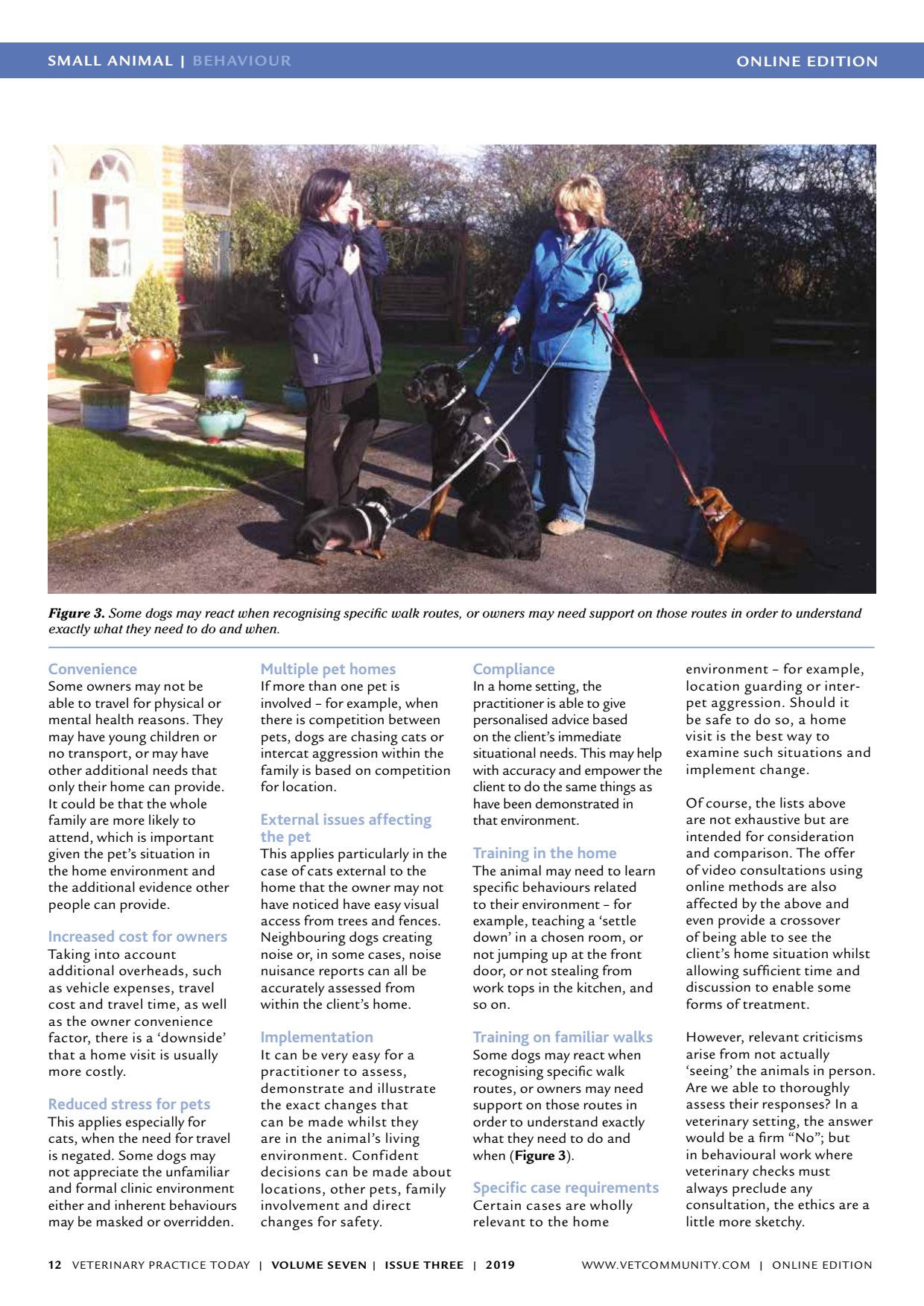Convenience Increased cost
ONLINE EDITIONSMALL ANIMAL | BEHAVIOUR VETERINARY PRACTICE TODAY | VOLUME SEVEN | ISSUE THREE | 2019 12 Convenience Some owners may not be able to travel for physical or mental health reasons. They may have young children or no transport, or may have other additional needs that only their home can provide. It could be that the whole family are more likely to attend, which is important given the pets situation in the home environment and the additional evidence other people can provide. Increased cost for owners Taking into account additional overheads, such as vehicle expenses, travel cost and travel time, as well as the owner convenience factor, there is a downside that a home visit is usually more costly. Reduced stress for pets This applies especially for cats, when the need for travel is negated. Some dogs may not appreciate the unfamiliar and formal clinic environment either and inherent behaviours may be masked or overridden. Multiple pet homes If more than one pet is involved for example, when there is competition between pets, dogs are chasing cats or intercat aggression within the family is based on competition for location. External issues affecting the pet This applies particularly in the case of cats external to the home that the owner may not have noticed have easy visual access from trees and fences. Neighbouring dogs creating noise or, in some cases, noise nuisance reports can all be accurately assessed from within the clients home. Implementation It can be very easy for a practitioner to assess, demonstrate and illustrate the exact changes that can be made whilst they are in the animals living environment. Conf ident decisions can be made about locations, other pets, family involvement and direct changes for safety. Compliance In a home setting, the practitioner is able to give personalised advice based on the clients immediate situational needs. This may help with accuracy and empower the client to do the same things as have been demonstrated in that environment. Training in the home The animal may need to learn specific behaviours related to their environment for example, teaching a settle down in a chosen room, or not jumping up at the front door, or not stealing from work tops in the kitchen, and so on. Training on familiar walks Some dogs may react when recognising specific walk routes, or owners may need support on those routes in order to understand exactly what they need to do and when ( Figure 3 ). Specific case requirements Certain cases are wholly relevant to the home environment for example, location guarding or inter- pet aggression. Should it be safe to do so, a home visit is the best way to examine such situations and implement change. Of course, the lists above are not exhaustive but are intended for consideration and comparison. The offer of video consultations using online methods are also affected by the above and even provide a crossover of being able to see the clients home situation whilst allowing sufficient time and discussion to enable some forms of treatment. However, relevant criticisms arise from not actually seeing the animals in person. Are we able to thoroughly assess their responses? In a veterinary setting, the answer would be a firm No; but in behavioural work where veterinary checks must always preclude any consultation, the ethics are a little more sketchy. Figure 3. Some dogs may react when recognising specific walk routes, or owners may need support on those routes in order to understand exactly what they need to do and when. WWW.VETCOMMUNIT Y.COM | ONLINE EDITION
